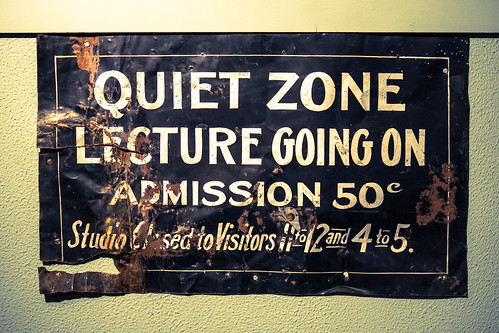The Conference Lecture Paradox
When talking about conference education, most people think about the traditional lecture.
It is perceived as the holy grail of much of the conference. Many attendees swear they learn a lot from those subject matter expert speeches.
It’s a paradox. Attendees flock to general sessions and breakouts to hear a lecture. Yet science says they retain very little from it. Same goes for panels, but that’s another post.
Hat tips to authors Thom and Joani Schultz for their writings about learning and adult/youth/children education.
Our Love/Hate Affair With Conference Lectures
One person on stage talking from behind a podium possibly using slides.
What really happens during this time? How much is learned, retained and applied? What’s the goal of that lecture? What difference does this presentation make? Is there a better way?
What do the chair warmers feel they receive from their time commitment in front of that podium? Why do they swear that the lecture changes their attitude, behavior and skills?
Interestingly, few of us like being told what to do. We don’t like being preached at.
- He should practice what he preaches.
- She launched into a lengthy rant and why we should purchase her book.
- He loves to hear the sound of his own voice as he gave us a sermon on why we were doing it wrong.
- Her speech was the same as last year. I think she is totally off base. Why did they select her?
We rarely talk about the lecture in positive terms.
Unlocking That Paradox
People come to conferences with a social expectation that they will be lectured to.
A good 60-minute education session passes with a minimum of discomfort. We’ve trained our audiences that the traditional conference education session is comfortable. They will not be required to do anything but sit and listen.
Yet learning isn’t effortless. It’s effortful!
It does not matter to the listeners that they are unable to repeat even the main theme of the message five minutes later; the important thing is the comforting emotion of familiarity and belonging which swept over them as they were listening. -Paraphrase of author John Hull.
Should conference organizers be content with merely transforming the distasteful lecture into the comfortable? Should conference organizers aim for attendee satisfaction and temporary, fleeting emotional highs from lectures?
Can’t the traditional lecture result in more learning than we’ve come to accept?
Perceptions Of Lectures
Authors Thom and Joani Schultz polled adults who attend churches to listen to faith-based lectures-the sermon. Here’s what they discovered:
- Only 12% say they remember the message.
- 87% said their mind wanders during the lecture.
- 35% said the speech was too long.
- 11% of women and 5% of men credit the lecture-sermon as their primary source of knowledge about their faith.
The Problem With Lectures
The problem with the lecture is the medium itself. We have come to believe it is the only way to learn.
Learn more about the research of the effectiveness of the lecture:
- Conference Are Providing Inferior Education Through Lectures
- Uses And Abuses Of The Common Lecture
- Five Myths Of Interactive, Participatory Learning For STEM Conferences
What would happen if marketers and advertisers who understand communications and persuasion very well adopted the lecture as their primary method to approach captive audiences? What is the responsibility of the conference planning team regarding lectures when they know they are ineffective?



Chuckling – even tho’ I don’t lecture, the terminology is so ingrained that people tell me how much they enjoyed my lecture .. or speech! It also goes to my contention that meetings are designed like many of the worst school experiences. It’s remarkable. Thanks, Jeff.
This is one of the insightful posts I’ve read so far this week. I totally agree with the demographics! Really fun to read Jeff!